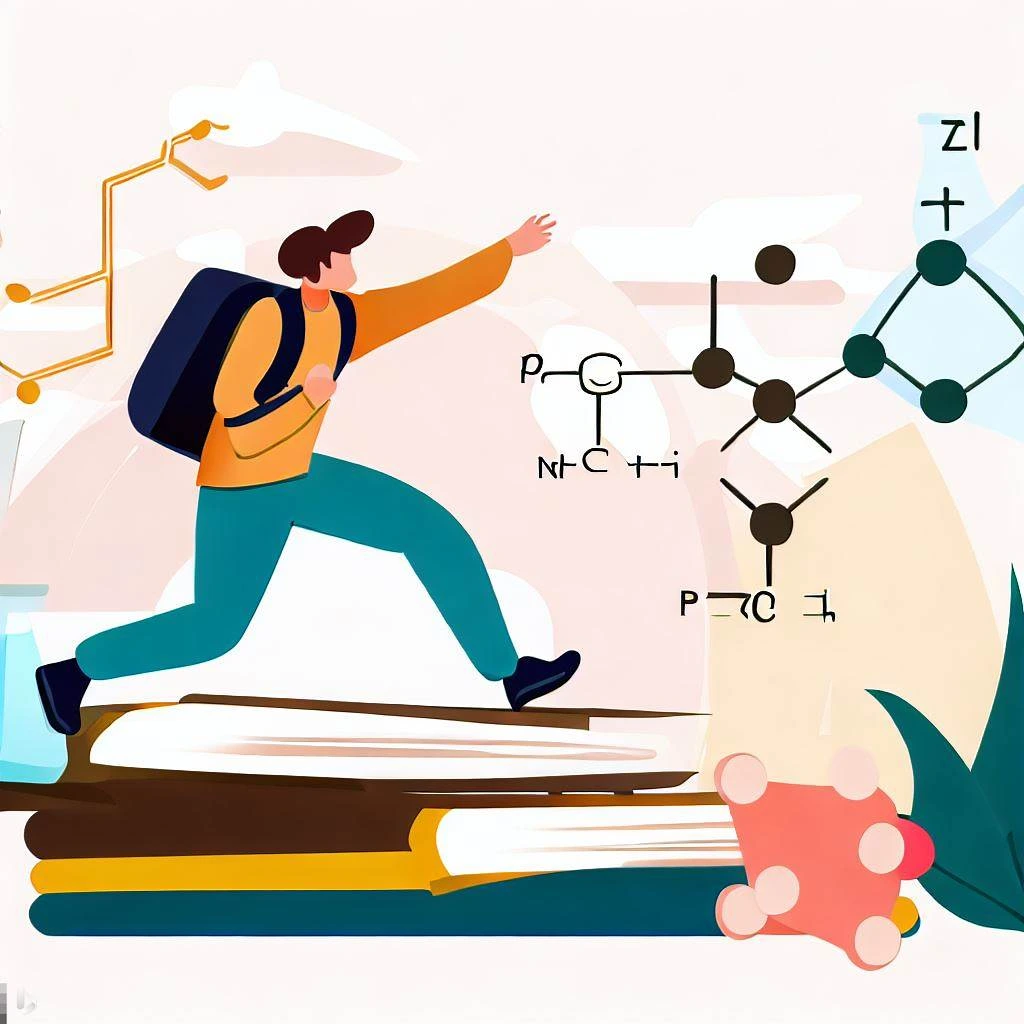Inorganic Chemistry and its Applications: Your Comprehensive Guide


The study of inorganic chemistry, frequently thought of as the less interesting cousin of organic chemistry, is a vast and active field that covers a wide range of chemical phenomena. Inorganic chemistry is essentially the study of substances without carbon-hydrogen bonds, such as complex compounds found in biological systems and minerals found in the earth's crust. The depth and breadth of inorganic chemistry and its numerous applications will be revealed in this thorough guide.
Review of Inorganic Chemistry
The study of inorganic minerals, catalysts, and compounds is the focus of the branch of chemistry known as inorganic chemistry. These materials frequently play a crucial part in a number of industrial processes. The topic has traditionally been broken down into coordination complexes, transition metal compounds, and main group compounds. Furthermore, a thorough comprehension of these sections paves the way for investigating solid-state methods, synthetic methods, and physical methods in inorganic chemistry. This branch of chemistry is supported by the periodic table, which aids in understanding how elements and their compounds behave according to their electronic configurations.
The study materials for inorganic chemistry can be quite simple, like a mineral with a single element, or quite complex, like a metal-organic compound found in some catalysts or enzymes. The variety of inorganic compounds provides a fascinating range of opportunities for experts to create new materials and catalysts, advancing science and technology.
Inorganic Chemistry Applications
Numerous inorganic chemistry applications exist in a variety of industries, and each one contributes to the advancement of technology, medicine, environmental protection, and other fields.
- Medical Inorganic Chemistry:A vital area of inorganic chemistry known as medicinal inorganic chemistry is extremely important in medicine. Metal complexes used in chemotherapy are one notable example. A platinum compound called cisplatin is frequently used to treat various cancers, including ovarian and testicular cancer. Cisplatin works by interacting with the DNA of cancer cells to stop them from proliferating and ultimately killing them. Other metal complexes are still being researched as potential medications for various diseases.
- Environmental Conservation and Inorganic Chemistry: Environmental science also heavily relies on inorganic chemistry. It aids in comprehending a variety of environmental phenomena, such as the chemistry of freshwater and the behavior of pollutants in the atmosphere. For instance, understanding the formation of acid rain and its mitigation requires knowledge of inorganic chemistry. The main contributors to acid rain are emissions of sulfur and nitrogen oxides, which produce acids in the atmosphere. Additionally, inorganic chemistry aids in the formulation of sustainable substitutes for conventional, environmentally damaging methods and the design of techniques for reducing industrial waste.
- The Role of Inorganic Chemistry in Material Science:For material scientists to create new materials with desired properties, inorganic chemistry is essential. These substances range widely and include magnets, dielectrics, and superconductors. Superconductors, for instance, are substances that can conduct electricity without any resistance. Inorganic substances, like Yttrium-Barium-Copper-Oxide, make up the majority of superconductors. Similarly to this, inorganic substances are crucial to the design of enamels, glasses, and ceramics.
Navigating Inorganic Chemistry Assignments
Assignments in inorganic chemistry can be difficult because of the variety of topics and level of understanding needed. However, tackling these assignments strategically can aid in doing so in an efficient manner.
- Recognizing the Fundamental Principles: Effective assignments require a solid grasp of the underlying concepts of inorganic chemistry. Inorganic chemistry is built on the fundamental ideas of atomic structure, molecular structure, bonding types, and the periodic table. The properties and reactivity of inorganic compounds can be predicted using these principles.
- Applying Concepts to Problems in the Real World: The concepts of inorganic chemistry can be used to address problems in the real world. It is not just about theoretical knowledge. As a result, assignments frequently involve applying newly learned concepts to real-world problems. How, for instance, can a particular inorganic compound be created in a laboratory? Or how might one lessen a specific environmental issue using the concepts of inorganic chemistry?
Transition Metals' Importance in Inorganic Chemistry
Transition metals, which comprise groups 3 to 12 on the periodic table and form the d-block, are a vital part of any discussion of inorganic chemistry. Transition metals have numerous uses across many fields and are distinguished by their variable oxidation states, colored compounds, and magnetic properties. They play a crucial role in many industrial procedures, catalysis, and even biological systems.
Transition metals' versatility is a result of their capacity to exist in various oxidation states. Due to partially filled d orbitals, transition metal ions are easily involved in oxidation and reduction processes. Numerous industrial uses make use of this capability, but batteries stand out. For instance, the majority of our portable electronic devices are powered by lithium-ion batteries, which frequently use lithium-cobalt oxide as their cathode material.
Transition metals excel in catalysis because they can create intricate structures with numerous coordination sites. The Haber process, which uses iron as a catalyst to create ammonia from nitrogen and hydrogen, is one of the best examples of this. Such catalytic processes are essential for a variety of industrial processes, including the synthesis of fuels, polymers, and fertilizers.
Transition metals are used to create the active sites of numerous vital enzymes in biological systems. The vital role that transition metals play in biology is best illustrated by the iron-containing proteins hemoglobin and cytochrome c, which are involved in cellular respiration and oxygen transport, respectively.
Bridging the Gap Between Inorganic Chemistry and Biology: Bioinorganic Chemistry
The study of the function of metals in biology is the focus of the subfield of bioinorganic chemistry. This multidisciplinary field sheds light on how metals, metalloproteins, and even metalloenzymes function in medicine. It has implications for medicine, environmental science, and the development of novel catalysts and heavily relies on the principles of inorganic chemistry to comprehend biological phenomena.
The goal of bioinorganic chemistry is to comprehend how organisms carry out processes like electron transfer and metabolite transformations using inorganic substances and elements. Examples include the use of magnesium in photosynthesis and the use of iron in the storage and transportation of oxygen.
On a more practical level, metal-based drugs like anticancer agents are designed in large part by bioinorganic chemistry. For instance, the aforementioned cisplatin was created using bioinorganic chemistry principles. More investigation in this area may result in the creation of more effective and targeted anticancer drugs.
Understanding the Strength of Metal-Carbon Bonds through Organometallic Chemistry
The study of chemical compounds with at least one metal-to-carbon bond, where the metal is a component of an organic group, is known as organometallic chemistry, a subfield of inorganic chemistry. This area of study has become increasingly important in synthetic chemistry, especially when it comes to creating complex molecules from basic building blocks.
The investigation of organometallic compounds resulted in the creation of a number of significant catalysts, including Wilkinson's and Grubbs' catalysts. These catalysts are utilized in organic synthesis processes like olefin metathesis and hydrogenation, respectively.
Processes in industry also heavily rely on organometallic chemistry. For instance, the commercial production of polymers like polyethylene and polypropylene uses the organometallic compound Ziegler-Natta catalyst.
In fact, the ability to control metal-carbon bonds has had a big impact on how chemists approach the synthesis of complex molecules, the production of polymers, and even drug design.
The Chemistry of Coordination: Understanding Complexes
An important area of inorganic chemistry that deals with the study of coordination compounds or complexes is coordination chemistry. These are molecules or ions that have several atoms or groups of atoms, called ligands, surrounding a central atom (often a transition metal). Understanding the behavior of these complexes, which frequently display distinctive properties and are widely utilized in a variety of applications, requires knowledge of coordination chemistry.
Coordination compounds have a wide range of potential uses in fields like material science, medicine, and catalysis. For instance, the coordination compound cisplatin is an effective anti-cancer medication. Coordination compounds have a wide range of applications in the field of catalysis, including the synthesis of polyethylene and polypropylene. In order to make luminescent materials for organic light-emitting diodes (OLEDs), certain coordination compounds have also been used.
Conclusion:
In conclusion, inorganic chemistry is a fascinating and important field of study, despite being frequently misunderstood or undervalued. It supports a number of crucial industrial processes, aids in the protection of the environment, and paves the way for scientific advancements. Inorganic chemistry permeates every aspect of our lives, from its role in the design and development of novel materials to its fundamental position in comprehending biological processes. Students who study this subject gain a solid understanding of the laws governing the physical world, as well as the ability to apply that knowledge to some of the most pressing problems facing society today. They might be essential in the development of novel pharmaceuticals, more environmentally friendly industrial processes, and even the design of the newest electronic devices. This thorough manual should act as a springboard for students to understand the breadth and depth of inorganic chemistry and successfully complete their assignments. They will learn as they learn more that inorganic chemistry is a potent tool for innovation and problem-solving, not just a subject to be studied.